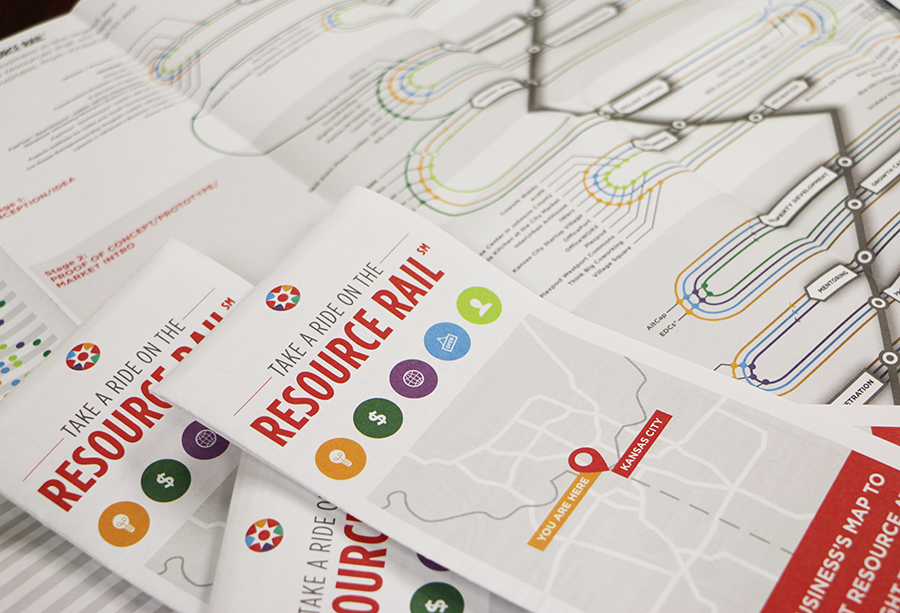This four-part series addresses why tracking and measuring the activity of your entrepreneurial ecosystem is crucial to its long-term sustainability and the economic success of your community.
Part 1: Why Measurement Is Important
In today’s fast-paced and dynamic business landscape, entrepreneurship is center stage. Entrepreneurial communities continue to grow all across the United States, fostering innovation, job creation and economic growth. These entrepreneurial communities, often referred to as entrepreneurial ecosystems, thrive when there is collaboration, resource allocation aligned with the ecosystem’s specific needs, and coordinated strategic planning.
As entrepreneurial ecosystems evolve, it becomes increasingly important to measure their progress and impact. You can’t know where your headed, without understanding where a community has been. Data collection and reporting is a challenge for multiple reasons:
- Leaders don’t know what to report.
- Concerns about the time and cost involved.
- Entrepreneurship data lags, is not accurate, or simply not available
- Ecosystem builders don’t know how to report on entrepreneurship advances within a community because our emerging field lacks accepted standards and guidance.
Given these challenges, how do we measure the vitality and health of our ecosystems? Why is measurement so crucial, and how can it guide us in fostering sustainable and prosperous entrepreneurial communities that produce the results we desire?
To answer these questions, this four-part series delves into the significance of measurement in the context of entrepreneurial ecosystems and the methodologies and tools for doing so, including:
- Part 1: Why measurement is important.
- Part 2: What to measure (current state, opportunities and gaps, metrics, sustainability).
- Part 3: How to start measuring (methodologies and measurement instruments).
- Part 4: Putting the data to work.
Measurement Yields Insights for Decision-Making
Entrepreneurial ecosystems are complex and multifaceted. They involve a diverse range of stakeholders, from startups and established businesses to government organizations (at all levels), universities, investors, economic development professionals, policy makers, entrepreneurial support organizations, and industry groups such as chambers of commerce and trade associations.
Understanding how each of these stakeholders interacts and contributes to the ecosystem’s growth is essential for making informed decisions and driving progress. Measurement plays a significant role in that understanding and in allowing community champions to make decisions on how to advance a community forward.
The manager of an entrepreneurial resource program that receives state funding must be able to justify, for example, the use of taxpayer dollars not by talking in general about the success they believe the program is having, but rather, that manager must be able to demonstrate the program’s value and positive impact on entrepreneurs and the community by capturing specific data related to the program’s mission and stated outcomes. Being able to use metrics to tell a compelling story about the program’s outcomes is key to sustainable funding. Lack of data, or data that does not support the program’s mission, may be an indication that funds could be better used elsewhere to fill a gap.
A case in point from recent history: Maria Meyers, vice chancellor and executive director of the University of Missouri-Kansas City Innovation Center, notes that during the COVID era, for the first time ever, government agencies awarded grants directly to businesses. But, she asks, “What is that doing for business sustainability? Did the grants go to the right people and the right businesses?”
Meyers said if ecosystem builders (including government agencies) “don’t think about those things and set up the right measures,” we lose the opportunity to assess the full impact of the funding—and cannot be certain whether to repeat such initiatives in another national emergency or global health crisis.
While these examples demonstrate the importance of measurement in validating continued funding for programs that already exist, measurement can also be used to justify the development of new programs that address suspected gaps.
Cameron Cushman, assistant vice president for innovation ecosystems at the University of North Texas Health Science Center (HSC) at Fort Worth works on the HSC Next Team, along with Marco Johnson, Sparkyard’s Network Builder. Both are involved in research, innovation and commercialization efforts.
As Cushman describes it, “We’re trying to build out the broader innovation and entrepreneurial ecosystem in an economic development way, but from the perspective of a medical school.”
When Cushman and Johnson arrived, entrepreneurship development metrics were not being tracked. But they kept hearing there was a lack of early-stage capital investment, in spite of investors’ claims they were indeed funding Fort Worth area startups. Which was the reality?
“We had no way to track it,” Cushman said. “We had no way to say that it was really as much of a problem as the entrepreneurs told us that it was. So, we got access to PitchBook, a proprietary database that tracks early-stage funding. And we just started counting it up. When we measured the 50 U.S. largest cities by population, Fort Worth is the 13th largest city in the country. And then we did the same metrics using PitchBook, and in spite of being the 13th largest city in the country, our early-stage financing ranked us 40th.”
Cushman noted that with this real data in hand, he could demonstrate early-stage funding in Fort Worth was an actual problem and could begin to find a solution to close the gap.

Measurement’s Key Purposes
Measuring an entrepreneurial ecosystem, serves several critical purposes, including:
- Quantifies Impact. By measuring various aspects of the entrepreneurial ecosystem, we can gauge its impact on job creation, economic development, and innovation. This data provides valuable insights for decision-makers and stakeholders, as Meyers and Cushman attest.
- Identifies Gaps and Opportunities. Measurement helps identify gaps in resources and support services within an ecosystem. Recognizing these shortcomings is the first step toward addressing them and promoting growth. Measurement allowed Cushman to establish unequivocally that there was a gap in Fort Worth startup funding.
- Helps Allocates Resources Effectively. With accurate measurements, resources can be allocated more efficiently. This ensures investments are directed toward areas where they can have the most significant impact.
- Tracks Progress. Entrepreneurial communities are dynamic. Measuring progress over time allows trends, strengths and weaknesses to be identified, enabling continuous improvement and, ultimately, sustainability.
- Holds Stakeholders Accountable. Measurement holds stakeholders accountable for their contributions to the ecosystem. It ensures the allocated resources are used efficiently and effectively and that you and your staff work effectively.
- Aids Strategic Decision-Making. Data-driven insights help ecosystem builders make informed decisions about what’s working, what isn’t and how to recalibrate efforts.
- Encourages Community Engagement. Measurement fosters engagement, communication and participation within the community by highlighting the impact of individual efforts and collective collaboration.
- Attracts Investment. Measurement helps justify ecosystem builders’ requests for support. Investors and partners are more likely to engage when they can see the measurable impact and potential for growth.
Measurement: A Roadmap for Your Entrepreneurial Ecosystem
Understanding entrepreneurial ecosystem measurement is similar to knowing how to use your car’s GPS when you’re on a road trip—it helps you navigate and make informed decisions. Even if it seems obvious, having concrete measurements provides a clearer picture of what’s working and what needs improvement in the entrepreneurial landscape, guiding you to just the right balance for optimal success.

Measurement encompasses more than just knowing there are entrepreneurs in your community. More broadly, it is about understanding their challenges, the community-specific support they need and the health of your overall ecosystem.
Because they highlight areas of strength and opportunity as well as identify weaknesses and gaps, measurement can aid policymakers, investors, resource program managers and providers—and entrepreneurs themselves—in making strategic choices. It sheds light on which path to take for optimizing resources, fostering innovation and creating an environment in which businesses will thrive.
Even if the importance of measurement seems obvious, having a systematic way in which to measure your entrepreneurial ecosystem ensures you do not just rely on intuition and instead base your decisions on solid data. Part 2 of this series will begin to address that systematic approach by exploring how to determine what your entrepreneurial community should measure to maximize your success with entrepreneurship-led economic development.

